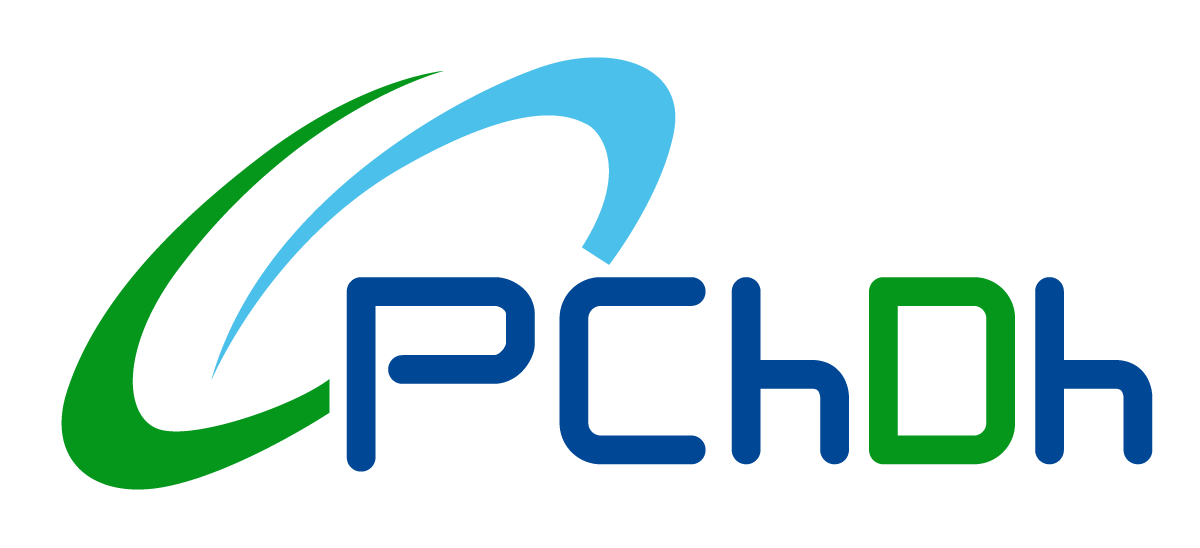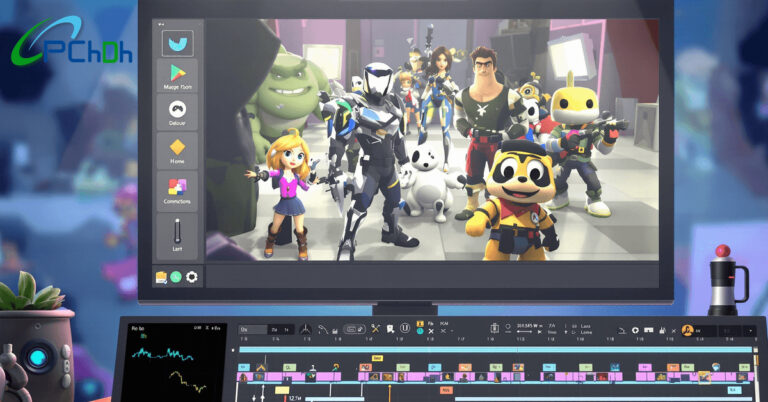Source Filmmaker (SFM) is a powerful free tool from Valve Corporation that allows creators to make amazing 3D animated movies using assets from popular games like Team Fortress 2 and Half-Life. This flexible animation platform has become essential for both hobbyist animators and professional content creators.
One crucial step in creating high-quality animations is the SFM compile process. This process takes your creative ideas and turns them into a finished video. By mastering this process, you can:
- Produce top-notch rendered animations
- Have complete control over your final output
- Fix common technical problems
- Save time during post-production
- Create content that looks professional
This guide will walk you through the SFM compile process in 5 simple steps. Each step is designed to help you understand the complexities of animation rendering. You’ll learn important techniques for preparing your scenes, setting up export settings, and using the SFMCompile utility effectively.
Whether you’re just starting out with animation or you’re an experienced creator looking to improve your workflow, this guide has the information you need to take your SFM projects to the next level. From basic setup to advanced troubleshooting, you’ll find practical solutions to common challenges and learn professional techniques for producing animations.
Understanding SFM Compile Basics
The SFM compile process transforms your creative vision into a watchable video file. This crucial step combines all your animation elements into a cohesive final product, ready for sharing or further editing.
Core Components of SFM Compilation
1. Posing and Animation
- Character positioning and movement sequences
- Precise timing adjustments for fluid motion
- Keyframe manipulation for smooth transitions
2. Lighting Setup
- Dynamic light source placement
- Shadow quality and intensity control
- Ambient occlusion settings for depth
3. Camera Work
- Shot framing and composition
- Movement paths and speed control
- Depth of field adjustments
4. Facial Animations
- Phoneme mapping for lip-sync
- Expression control and blending
- Muscle system adjustments
Export Format Selection
The choice between AVI and image sequences impacts your workflow significantly. Image sequences allow you to pause and resume rendering at any point, while AVI creates a single file that must complete in one session.
1. AVI Format
- Direct video file output
- Smaller file sizes
- Limited quality control
- Risk of corruption during long renders
2. Image Sequences (TGA/PNG)
- Frame-by-frame export
- Higher quality preservation
- Easier error recovery
- Flexible post-production options
- Larger storage requirements
Quality Considerations
Your export settings directly affect the final result:
- Resolution determines clarity and detail
- Frame rate affects motion smoothness
- Sampling rates influence lighting quality
- Compression settings balance file size and visual fidelity
The rendering process combines these elements into your final output. Higher quality settings increase render times but produce cleaner, more professional results. Understanding these basics helps you make informed decisions about your export configuration.
Step 1: Preparing Your Scene for Compilation
Proper scene preparation creates the foundation for a successful SFM compilation. Here’s your essential checklist for scene setup:
Model and Asset Verification
- Check all models are loaded correctly in their intended positions
- Verify texture files are present and displaying properly
- Remove any unnecessary objects that might impact render time
- Ensure all required custom assets are installed in your SFM directory
Timeline Organization
- Set keyframes at consistent intervals for smooth motion
- Lock completed animation tracks to prevent accidental changes
- Split complex animations into manageable segments
- Double-check that all animations play without stuttering or gaps
Lighting Setup
- Position key lights to highlight important scene elements
- Add fill lights to soften harsh shadows
- Use rim lights to separate characters from backgrounds
- Test different light intensities through the preview window
Camera Configuration
- Lock camera movements to prevent unwanted shifts
- Set appropriate depth of field values
- Adjust field of view (FOV) settings for each shot
- Enable motion blur if needed for dynamic scenes
Performance Optimization
- Hide unnecessary elements outside the camera view
- Reduce particle effects in complex scenes
- Lower polygon count on background models
- Use LOD (Level of Detail) settings for distant objects
Running multiple preview renders at different points in your timeline helps identify potential issues before the final compilation. Pay special attention to areas with multiple animated elements or complex lighting setups, as these often require additional fine-tuning.
Step 2: Configuring Export Settings for Quality Output
Your export settings directly impact the final quality of your SFM animation. Let’s dive into the crucial configuration options you need to master.
Frame Rate Selection
- 24 FPS: Creates a cinematic look, ideal for story-driven animations
- 30 FPS: Provides smooth motion while balancing render times
- 60 FPS: Delivers ultra-smooth animation, perfect for action sequences
Your frame rate choice affects both the perceived smoothness and the rendering time. Higher frame rates require more processing power but result in smoother motion – especially noticeable in fast-paced scenes.
Resolution Settings
The standard HD resolution (1920×1080) offers an excellent balance between quality and performance. Consider these resolution guidelines:
- 1280×720 (HD): Use for quick previews or draft renders
- 1920×1080 (Full HD): Industry standard, recommended for most projects
- 2560×1440 (2K): Higher quality option for detailed scenes
- 3840×2160 (4K): Reserve for showcase pieces due to longer render times
Advanced Export Options
- Enable Progressive scan mode for cleaner frame transitions
- Set Aspect Ratio to 16:9 for standard widescreen format
- Use High Quality mode for final renders
- Select PNG sequence export for maximum quality
Your project’s specific needs determine these settings. Action-heavy animations benefit from higher frame rates, while dialogue scenes work well with standard 24 FPS. The resolution choice impacts your final file size and rendering time – balance these factors against your available system resources.
Step 3: Using SFMCompile Tool to Streamline Asset Compilation
The SFMCompile utility transforms your asset management workflow by automating time-consuming compilation tasks. This powerful tool handles multiple assets simultaneously, reducing manual intervention and speeding up your production pipeline.
Key Features of SFMCompile:
- Batch processing of models and textures
- Automated error detection
- Command-line interface for advanced users
- Version control integration
- Custom scripting support
Your source files need specific preparation to work effectively with SFMCompile. Here’s a systematic approach to optimize your assets:
1. Texture Compression
- Convert textures to DXT format
- Reduce texture sizes to power-of-two dimensions
- Apply mipmapping for better performance
2. Model Optimization
- Create Level of Detail (LOD) variations
- Remove unnecessary polygons
- Optimize vertex count for better performance
Command-Line Options for Advanced Control:
-verbose: Detailed logging output -overwrite: Replace existing compiled files -output: Specify custom output directory -parallel: Enable multi-threaded compilation
You can integrate SFMCompile into your existing workflow through custom scripts. This automation helps maintain consistent file naming conventions and organized folder structures across your projects.
Asset Organization Tips:
- Create separate folders for models, textures, and animations
- Use clear naming conventions (project_asset_version)
- Keep source files and compiled assets in different directories
- Implement version control for tracking changes
The tool’s built-in error detection helps identify missing textures, incompatible file formats, or broken references before they cause issues in your final render.
Step 4: Post-Production Tools and Techniques for Enhancing Your Animation
Your SFM animation’s true potential emerges during post-production. Here’s your essential software toolkit for professional-grade results:
Audio Enhancement with Audacity
- Clean up background noise
- Adjust volume levels
- Add sound effects
- Create custom music tracks
- Export in high-quality formats
Video Editing Power Tools
- HitFilm Express
- Color grading capabilities
- Special effects integration
- Multi-track timeline editing
- Professional transitions
- DaVinci Resolve
- Advanced color correction
- Motion graphics creation
- High-end visual effects
- Industry-standard editing features
Image Sequence Management
- VirtualDub transforms your PNG/TGA sequences into seamless AVI files
- Maintains original quality while reducing file sizes
- Supports custom codec selection
- Enables frame rate adjustments
Workflow Tips for Perfect Sync
- Import your audio track first
- Place key animation frames on audio beats
- Use waveform visualization for precise timing
- Create separate tracks for dialogue, music, and effects
- Apply crossfades between audio segments
Quality Enhancement Techniques
- Add subtle motion blur for smoother animations
- Apply color LUTs for consistent visual style
- Implement noise reduction filters
- Fine-tune contrast and saturation levels
- Export at appropriate bitrates for your platform
These tools unlock new possibilities for your SFM projects. Each software brings unique strengths to enhance different aspects of your animation, creating a polished final product that stands out.
Step 5: Troubleshooting Common Issues and Optimizing Performance
Common SFM compile errors can halt your animation progress, but identifying and fixing these issues will streamline your workflow. Here’s a comprehensive breakdown of typical problems and their solutions:
Camera-Related Issues
- Using the work camera instead of shot cameras creates unexpected visual results
- Fix: Create dedicated shot cameras for each scene and ensure they’re properly selected in the timeline
- Double-check camera angles and movements before compilation
Lighting Problems
- Grainy or noisy lighting effects in rendered output
- Solution: Increase sampling rates in render settings (recommended: 256 samples minimum)
- Enable advanced lighting features:
- Ambient Occlusion
- Motion Blur
- Anti-aliasing (at least 8x)
Missing Assets
- Textures or models failing to appear during compilation
- Resolution steps:
- Verify all assets are properly loaded in the Project Explorer
- Check file paths and naming conventions
- Reimport problematic assets
- Clear cache files if issues persist
Performance Optimization
- Break large projects into smaller segments for faster compile times
- Use placeholder models during development phases
- Monitor system resources during compilation
- Clear SFM cache regularly to prevent bloat
Advanced Lighting Fixes
- Implement three-point lighting setup for professional results
- Adjust shadow softness and light falloff
- Use rim lights to separate characters from backgrounds
- Enable Progressive Refinement for real-time lighting preview
These optimization techniques will significantly improve your render quality and reduce compilation errors. Regular testing and incremental saves help catch issues early in the production pipeline.
Community Support and Learning Resources
The SFM community offers extensive support networks and educational resources to help you master the compilation process. Here’s where you’ll find valuable assistance:
Steam Community Forums
- The official SFM Steam Community hub hosts dedicated discussion boards
- Active moderators provide technical support and troubleshooting advice
- User-created guides share specialized compilation techniques
- Weekly showcases highlight successful projects and their workflows
Reddit Communities
- r/SFM features a dedicated help thread for compilation issues
- r/SourceFilmmaker connects you with experienced animators
- Regular feedback threads allow you to get expert opinions on your work
Additional Learning Platforms
- YouTube Channels
- SFM Workshop: Step-by-step compilation tutorials
- Animation Masters: Advanced rendering techniques
- SFM Tips & Tricks: Weekly optimization guides
- Discord Servers
- SFM Animators Hub: Real-time troubleshooting assistance
- Source Engine Artists: Asset sharing and compilation advice
- Animation Workshop: Peer review sessions
Resource Libraries
- sfmlab.com: Compilation-ready asset collections
- steamcommunity.com/workshop: User-created tools and scripts
- Community-maintained wikis with detailed compilation documentation
These platforms maintain active communities where you’ll find answers to specific compilation challenges. Many experienced users share their knowledge through detailed guides, video tutorials, and direct assistance.
Conclusion
Mastering SFM compile transforms your animation projects from basic renders to professional-quality productions. The combination of technical knowledge and practical application creates a solid foundation for your creative endeavors.
Your journey to SFM mastery includes:
- Consistent Practice: Regular hands-on experience with the compile process sharpens your skills
- Tool Optimization: Leveraging SFMCompile streamlines your workflow and enhances output quality
- Post-Production Excellence: Using software like DaVinci Resolve and Audacity adds professional polish
The path to expertise requires dedication to understanding both basic principles and advanced techniques. Each project serves as a learning opportunity, helping you develop efficient workflows and troubleshooting skills.
Remember these key success factors:
- Maintain organized project files
- Test different compile settings
- Document successful configurations
- Build upon previous experiences
Your growth as an SFM artist depends on applying these learned techniques consistently. The skills you’ve gained through this guide serve as building blocks for creating stunning animations. Take your next project as an opportunity to implement these practices—your improved workflow and enhanced output quality will demonstrate the value of mastering the SFM compile process.
Ready to elevate your SFM projects? Start applying these techniques today and watch your animations transform.
FAQs (Frequently Asked Questions)
What is the SFM compile process and why is it important for animation rendering?
The SFM compile process involves converting your Source Filmmaker animations into final video files. This step is crucial as it integrates key components like posing, lighting, camera movements, and facial animations to produce high-quality 3D animated movies.
How should I prepare my scene before compiling in Source Filmmaker?
Before compiling, ensure your scene is properly set up with all models and assets correctly placed. Review the animation timeline thoroughly for smooth sequences and perform lighting previews to adjust settings for optimal visual results.
What export settings are recommended for high-quality output in SFM compile?
Choosing the right frame rate (24, 30, or 60 FPS) based on your project’s needs is essential. Additionally, setting resolution standards typically at HD 1920×1080 ensures clear and crisp visuals in your final animation.
How does the SFMCompile tool assist in streamlining asset compilation?
The SFMCompile utility automates asset compilation tasks by preparing source files efficiently. It handles processes such as texture compression and model simplification (LODs), which helps optimize performance and simplifies the workflow.
What post-production tools are recommended to enhance animations after compiling?
Recommended post-production software includes Audacity for sound editing, HitFilm Express or DaVinci Resolve for video editing, and VirtualDub for converting image sequences to AVI format. These tools help sync audio and refine video output effectively.
How can I troubleshoot common issues encountered during the SFM compile process?
Common problems include incorrect camera usage, grainy lighting effects, or missing textures/models. Solutions involve increasing sampling rates, enabling advanced lighting features, and verifying asset integrity to optimize performance and improve animation quality.


